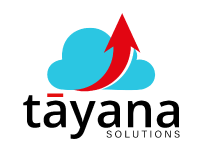Comparing Acumatica vs Sage
Sage is a trusted provider of ERP solutions for small- to mid-sized companies. Sage ERP Sage 50 handles the needs of small businesses, Sage 100 caters to mid-sized companies, Sage 300 is for large organizations, and Sage 500 is ideal for global enterprises.
However, there are some similarities between these Sage products and Acumatica:
- Acumatica Cloud ERP is a feature-rich financials suite
- Multi-Industry Support and verticals.
- Strong third-party software extensions (ISVs)
- Large reselling partner channel
Acumatica comes packed with many features, is highly customizable, and has strong third-party software support. By comparison, the Sage line of products relies on old client-server technology. Acumatica was designed so that you could use it via the cloud using current technology. Acumatica offers more features and functions than Sage, and hence it is the best choice for the long term.
Look at how Acumatica compares with Sage:
| Functionality | Acumatica | Sage |
|---|---|---|
| True cloud (built for cloud) | ||
| True mobility (supports all devices with no special apps) | ||
| Full function ERP | ||
| Full relational database export | ||
| Upgrade on your schedule | ||
| Flexible licensing options based on customer requirements | ||
| Multiple deployment options (cloud, on-premises, hybrid) | ||
| Scale as you grow | ||
| Lower Total Cost of Ownership (TCO) |
Acumatica significantly differentiates itself from Sage:
True cloud: True Cloud has many benefits, but one of the most important ones is that it allows access to applications without having to install any software. Many of Sage’s products were developed using older software development approaches and technology. They were built for on-premises deployments and retrofitted for the cloud.
Moreover, all of these products go short on speed, functionality, and ease of use. Acumatica was engineered to take advantage of cloud technology and can run equally on-premises or in the cloud. You can even switch between the deployment models whenever you like.
True mobility: Acumatica can be used on the device of your choice. Acumatica is formatted to resize everything on every screen to fit whatever device you are using. Every screen has the same information and flows, whether it is on a PC, tablet, or phone. Sage Online products support browser access on multiple devices, but the web pages do not automatically resize to accommodate mobile devices.
TCO: Acumatica charges by computing resources used, not per user. Sage charges per user. Your company’s costs grow as your company grows.
Full function ERP: Not all Sage products offer the same ERP functionality because the bulk of the Sage product line was built on older client-server technology from the 1990s. However, because their product line is scaled for various business sizes and needs, not all their products offer full functionality when deployed in the cloud as their on-premises counterparts. Acumatica is a fully integrated financial and ERP software for businesses. Acumatica can scale with your business in the cloud or on-premises.
Flexible licensing options: Both Sage and Acumatica are available through subscription licensing. Sage uses concurrent or named user licenses, depending on the product, while Acumatica offers a choice of licenses based on resource usage. Acumatica offers a choice of licensing options and charges based on resources needed – not by the user – so your business is not penalized for growth.
Multiple deployment options (cloud, on-premises, hybrid): Acumatica can support deployments on-premises, cloud, or hosted. Most Sage products cannot be deployed as a true cloud application because their legacy architecture is not cloud-friendly. As a cloud-native product, Sage is not accessible, does not support scalability and functionality, and can’t be deployed in private/hosted model nor an on-premises model.
Wondering How We Work?
About Sage
The Sage 50, 100, 300, and 500 products have been in the market for a long time and providing adequate functionality for small- to mid-sized businesses. However:
- These products are priced per user, so growing companies pay more.
- These products were built using older system architecture, which is a problem in scenarios designed for newer technologies, including cloud deployment options, customizations using current development tools, and integrations with CRM and other external applications.
- These products were developed independently on different platforms, so migration from one to another isn't easy.
Acumatica offers a complete, customizable ERP and CRM solution that is cloud-based. Plus, you only pay for system resources, regardless of whether Acumatica is deployed on-premises or in the cloud. Acumatica is the best, most affordable ERP for small and medium businesses online today. It’s intuitive, a quick-to-deploy solution with an open architecture lets businesses focus on what they do best – run efficiently and profitably.
If you’re thinking of buying an ERP, it’s important to research the different options available. We believe that the award-winning, business-critical ERP system, Acumatica, can help you increase efficiency and control costs throughout your organization. We encourage you to do research before purchasing any ERP software.
Begin with the end in mind. Ask yourself what you need your business to do in three to five years. Then go through the 4P’s of ERP (Product, Pricing, Promotion, and Potency) and choose an ERP system that is right for you now and in the future. It’s a competitive world out there. Make sure you take the time to choose the ERP system that is right for your business now and in the future.
Listening to your customers, understanding their requirements, staying ahead of the competition, and choosing your ERP system wisely are not services you can get elsewhere. Make sure you take some time to review Acumatica’s ERP software comparison to help you find the solution that is right for you.
